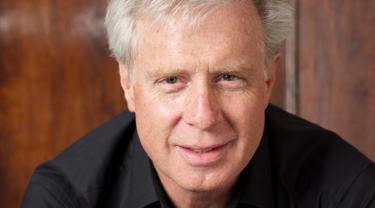Bob Berger is the president of Cambridge-based MW Canada – a leading innovator in the textile industry.
Learn more about the company’s success here.
When and why did you first start thinking about exporting as part of your business?
Exporting began at MW Canada in the 1970s, when my father ran the company. It was important from that point forward. It’s almost all of our business now: 97 per cent of sales.
How many countries do you export to and where is your biggest market?
We export to more than a dozen countries, from Mexico to South America to India to Europe, but mostly to the U.S., which is about 65 per cent of export sales.
How has your biggest export market changed over time?
There’s been huge consolidation in the United States home furnishing sector. So there are now fewer customers and larger ones only. There are no small-to-medium companies anymore.
Also, almost all our U.S. customers ship the material they buy from us onward to their plants in Mexico. They had to move their production there to compete on a labour-cost basis.
How has the global marketplace changed since you began exporting?
The textile business – apparel, or upholstery or window covering – is a design business. It’s much more diversified now to fit many types of tastes. It’s all about mass customization. There is no one big thing, but a multitude of products and (a need to) supply smaller volumes with much shorter lead times.
Tell us about a specific lesson learned from your company’s export journey.
In North America, window coverings are usually light in colour. White, ivory or champagne are by far the most popular colours. When we started exporting to Korea, we couldn’t understand why white wasn’t selling. Not even one order. Then someone told us white is the colour of death, for funerals. That made everything clear.
How many manufacturing facilities or offices do you have in other countries?
We have our office in Cambridge, Ontario as well as our manufacturing plant and another in North Carolina. What we do with both plants will depend on what happens with the new U.S. President.
Tell us about a critical moment in your export journey.
Well, we had a difficult challenge in 2009 when many of our U.S. customers were forced through legislative change, to threaten to cancel orders with us for filtration media. Suddenly, the projects they were involved in could only use products that were made in America. We decided to open a plant in North Carolina, installed our equipment there and we partnered with a U.S. company to provide the workers. That plant is still running.
What is the #1 thing SMEs need to know about exporting and trade?
Many things. Anyone starting to export should understand that every country has its own paperwork and way of doing business, and that you need good contacts in each country to be able to manoeuvre those issues. You have to be flexible, and you have to fully understand that if you want to do business in that country, you have to do it their way.
What do you know now that you wish you knew when you started exporting?
I’ve always kept the same ideals all along our export journey and our business journey – teamwork, excellent quality and customer service, investment in employees and always trying to see what’s coming.
What are some important characteristics that you believe every exporter should possess?
Flexibility and patience. There is nothing wrong with incremental change. If you keep at it, you’ll get to the position where you can have fun. That’s not always possible at the start of a business. It’s easy to look back and not so easy to look forward.
Any new markets on the horizon?
We look at every market. We have to be able to make money and the customer has to be able to make money.
If you could summarize your export journey with a word, phrase or image, what would it be?
A road in Tuscany. It’s always up and down, but you try to see over the hill and try to see what’s coming next and be aware as best you can of what’s coming. There are good times and bad times.





